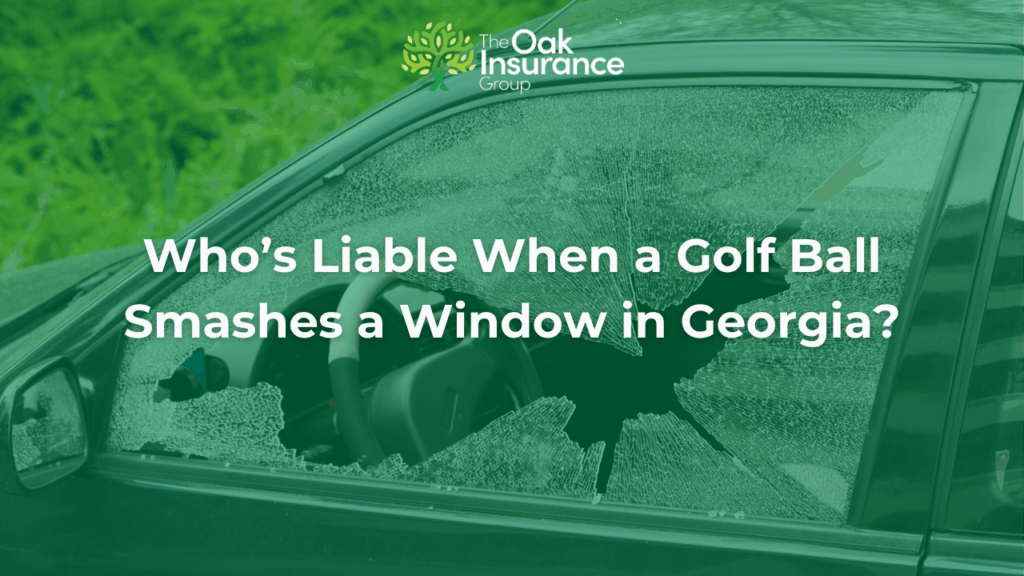
Have you ever wondered who’s responsible when a golf ball flies off-course and crashes into someone’s window?
If you own or manage a golf course in Georgia, could that simple mistake turn into a costly lawsuit?
In this comprehensive guide, you’ll learn how Georgia law handles errant golf balls, who’s liable when damage occurs, and the legal protections available to golf course owners.
We’ll break down:
- Georgia’s key legal doctrines, including assumption of risk and easements
- Real case law, like the pivotal DeSarno decision
- Practical risk management strategies to protect your course
- How to draft a rock-solid golf ball easement
- Insurance and homeowner relations tips to reduce legal exposure
Georgia’s Legal Landscape: What Governs Errant Golf Ball Liability?
Golf courses in Georgia face unique liability risks due to errant golf balls. Fortunately, two legal doctrines offer substantial protection when properly understood and applied.
Assumption of Risk: A Legal Shield for Course Owners
Under Georgia law, the doctrine of assumption of risk means homeowners who knowingly move next to a golf course accept the inherent risk of stray golf balls. In other words, if you choose to live near fairways and greens, you can’t claim complete surprise when one breaks your window.
A 2025 report by Atlanta News First emphasized that Georgia courts uphold this principle—placing significant legal responsibility on the homeowner, not the golf course.
Easements: The Best Legal Defense Against Lawsuits
Your strongest legal asset? A well-drafted, express easement. It gives your golf course the legal right for errant balls to enter neighboring properties.
In DeSarno v. Jam Golf Management, LLC (2008), the Georgia Court of Appeals upheld an easement clause allowing golf balls to “unintentionally come upon the Lot.” Despite 23 broken windows and numerous other damages, the golf course was not held liable because of the recorded easement.
Key takeaway: Without an easement, repeated ball damage can lead to successful nuisance or trespass claims. With one, you have a legal firewall.
Golfer vs. Golf Course: Who Actually Pays?
Even if your course is protected, the individual golfer may still be held responsible for damages they cause. The easement in the DeSarno case explicitly stated it did not relieve golfers of personal liability.
The National Golf Course Owners Association (NGCOA) reinforces this view: if a golfer’s shot causes damage—especially with reckless intent—they can be sued directly.
Risk Management: How to Prevent Legal Trouble
Strategic Course Design
A well-designed course can prevent lawsuits before they happen. Consider:
- Tee box adjustments to redirect shots
- Tree lines or vegetation buffers to stop stray balls
- Protective netting or fencing in high-risk areas
Consult a golf course architect before making changes to avoid unintentionally increasing liability.
Buffer Zones: An Unwritten Rule Worth Following
There are no official buffer zone standards in recreational golf—but don’t ignore them. Research from 1,561 golf negligence lawsuits shows nearly 50% of cases resulted in liability when no clear buffer was present.
Even if the law doesn’t require buffer zones, they show due diligence—and that can be powerful in court.
Smart Risk Mitigation Strategies
| Strategy | Description |
|---|---|
| Strategic Course Design | Layout changes to redirect balls away from homes |
| Clear Signage | Warning signs to alert golfers to risk zones |
| Protective Netting | Barriers to stop errant balls in vulnerable areas |
| Open Communication | Building trust and transparency with nearby homeowners |
Document Everything: A Legal Safety Net
If you ever face litigation, detailed records could save you. Keep documentation of:
- Course assessments
- Modifications made
- Communication with homeowners
- Legal reviews of easements
This shows a proactive approach to safety and risk management—essential in court.
How to Draft a Legally Sound Golf Ball Easement
A generic easement isn’t enough. To protect your course, your easement should include:
- Clear scope of affected properties
- Permission for unintentional ball entry
- Clarification that it protects the course owner—but not the golfer
- Language allowing reasonable ball retrieval
Sample Clause (Based on DeSarno Case)
“Every Lot… is burdened with an easement permitting golf balls unintentionally to come upon the Lots… and for golfers at reasonable time and in a reasonable manner to come… to retrieve errant golf balls. However, if any Lot is fenced… the golfer will seek the Owner’s permission before entry. This easement shall not relieve golfers of liability… nor shall the Association be held liable for any damage or injury.”
Insurance & Complaint Resolution: Don’t Skip These Steps
Even the best-prepared course faces occasional incidents. Make sure you have:
- Liability insurance that covers errant golf balls
- Coverage for both property damage and personal injury
And never ignore homeowner complaints. The NGCOA urges early communication and reasonable accommodations to prevent lawsuits before they start.
Conclusion: How to Protect Your Course and Community
At the end of the day, errant golf balls are inevitable—but lawsuits don’t have to be. If you’ve faced broken windows, homeowner complaints, or even legal threats, it’s time to take action.
By understanding Georgia’s legal doctrines, securing airtight easements, designing risk-aware courses, and communicating with nearby residents, you can shield your golf course from financial and legal pitfalls.
Now that you know how to protect your course from errant ball liability, your next step is to get a professional policy review.
We’ll help you evaluate your current insurance coverage, assess any legal exposure, and make sure your golf course is protected from all angles.
→ Ready to safeguard your course

